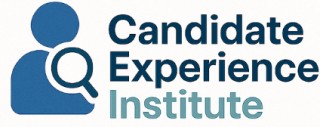The Importance of Candidate Experience
The Significance of a Positive Interaction
In today's competitive job market, employers who prioritize candidate experience stand out. A seamless and engaging hiring journey not only impacts potential employees but also enhances the overall reputation of the company. Candidates, reflecting on their interaction with potential employers, often evaluate several aspects such as the communication style, transparency in process, and fairness in decision-making.
A remarkable candidate experience can lead candidates to view the employer favorably, potentially influencing their decision to join the company or recommend it to others. This dynamic interaction is particularly crucial when considering the legal implications tied to employment discrimination, including the complexities that arise from a discrimination case and the settlement process.
Ensuring equitable treatment throughout the hiring process helps in mitigating risks associated with discrimination settlements. It also stresses the importance of understanding the nuances involved in these cases, such as legal fees, lost wages, and emotional distress damages. A candidate's understanding of such matters, including the potential punitive damages or wrongful termination claims, forms a part of their total experience with the employer.
When candidates perceive fairness and clarity, it minimizes the threat of litigation while fostering a respectful workplace culture. This positive perception is crucial in shaping the employer brand and can be augmented by adopting best practices in enhancing candidate experience. Exploring strategies can further refine this experience, as highlighted in resources such as enhancing candidate experience in CRO executive recruitment (https://www.candidate-experience-institute.com/blog/enhancing-candidate-experience-in-cro-executive-recruitment). By focusing on these elements, employers not only improve their standing in the eyes of potential hires but also ensure a more inclusive and engaging recruitment process.
Understanding Discrimination in Hiring
Unveiling the Complexities of Hiring Discrimination
Hiring discrimination is a persistent issue within the employment sector, impacting both employers and potential employees. Discrimination can manifest in various forms, including bias based on age, gender, race, disability, and more. Such practices not only harm individuals but also expose employers to potential lawsuits and financial liabilities. Understanding the dynamics of hiring discrimination is crucial for all stakeholders involved.
Discrimination cases often lead to settlements that cover damages for wrongful termination, emotional distress, and lost wages. Such cases necessitate legal expertise to navigate the complexities of employment laws and tax implications. Bias in hiring can lead to protracted legal battles, and companies may end up paying punitive damages under certain circumstances.
From a candidate's perspective, facing discrimination can be emotionally and financially draining. It is essential to be aware of the rights and protections available under employment laws, such as in states like California where stringent measures exist. However, the journey to receive compensation for discriminatory practices involves understanding the legal process and implications, including how settlements are taxed.
Awareness is key in combating employment discrimination. Prospective candidates should familiarize themselves with the legal avenues available to them. For those interested in learning more about the traits necessary to navigate the job market and succeed despite these challenges, visiting
Essential Traits for Job Success can offer invaluable insights.
Discrimination in hiring goes beyond individual cases; it affects the broader candidate experience. Companies must strive to create inclusive and fair recruitment practices. Addressing these issues not only supports candidates but enhances the overall candidate experience, reflecting positively on the organization’s brand.
What is a Discrimination Settlement Estimator?
Defining the Role of a Settlement Estimator
Navigating a discrimination case can be complicated, and determining a settlement amount is often a challenging aspect of the process. A Discrimination Settlement Estimator serves as a critical tool in this scenario. This calculator helps individuals understand potential outcomes by estimating the monetary value of settlements related to employment discrimination.
In the legal landscape, these estimators take into account various factors that might affect the total compensation, such as lost wages, emotional distress, and punitive damages. They aid in predicting the possible amounts that could be awarded in a case, focusing on elements like wrongful termination and emotional impact. Additionally, they also provide insight into potential settlements related to tax implications in areas such as tax treatment and lump sum payments.
The estimators utilize a combination of historical data, legal precedents, and financial calculations to project the settlement figures. They help in assessing both the tangible and intangible impacts of discrimination, including factors like front pay, legal fees, and attorney fees. By doing so, these estimators assist in informing candidates about what they might receive and how to effectively plan their cases.
It's important to understand the potential tax ramifications involved with settlements. Factors such as settlement taxes, discrimination cases, and the specific tax bracket can significantly influence the final settlement figure. While some compensation elements are tax-free, others might be subject to taxes, which is why determining the correct settlement amount is essential.
In some cases, different states, like California, may have specific regulations impacting settlement calculations, further emphasizing the need for such estimators. For those involved in a discrimination lawsuit or seeking to understand their potential compensation better, using a Discrimination Settlement Estimator can offer clarity and aid in thorough preparation. More on understanding your total compensation package can be explored
here.
Impact of Discrimination Settlements on Candidates
Influence of Legal Settlements on Employment Seekers
The focus of candidate experience isn't solely on how candidates are treated during the recruitment process but also extends to the potential ramifications of employment-related legal actions, such as discrimination settlements. The impact of these settlements on candidates is multi-faceted, touching upon emotional, financial, and professional dimensions.
When candidates are parties in discrimination cases, the settlement amount they receive can vary significantly. These amounts are determined after considering factors like lost wages, emotional distress, attorney fees, and potential punitive damages. The settlement's influence can be both a silver lining in a wrongful termination or an emotional setback.
Financially, settlements might be a necessary relief for candidates encountering discrimination and wrongful termination. However, it's crucial to recognize the tax implications involved. Candidates might find themselves evaluating complex legal and tax treatments, including whether the received amount affects their tax bracket or if certain portions are tax-free, such as those related to personal injury.
The emotional toll on candidates dealing with employment discrimination can be substantial. Beyond the devastating immediate effects, the settlement process can perpetuate emotional distress. Recognizing this can enhance employer awareness and guide them towards more sensitive handling of such cases, ultimately fostering a more compassionate candidate experience.
For those navigating the intricate landscape of discrimination claims, consulting a knowledgeable attorney is advisable. Legal advisors can provide guidance on the potential legal fees, damages, and taxes, ensuring that candidates make informed decisions that align with their best interests.
In California, and many other jurisdictions, the landscape for these legal proceedings can be complex, requiring awareness of local laws and any applicable differences in calculating a discrimination settlement. Online tools like a settlement calculator or tax calculator can be invaluable for candidates trying to understand the potential outcomes of their cases and the nature of lump sums received.
Ultimately, being aware of these elements can aid employers in refining their approach to candidate experience by anticipating possible needs and challenges of candidates embroiled in discrimination cases.
Using a Discrimination Settlement Estimator Effectively
Maximizing the Use of Discrimination Settlement Estimators
Using a discrimination settlement estimator can be a powerful tool in navigating the complexities of employment discrimination cases. These calculators help you understand potential settlement amounts that can be received after a termination or wrongful termination by taking into account damages, legal fees, and emotional distress.
- Understanding Components: The estimator considers various factors like lost wages, punitive damages, and emotional damages. It's essential to identify all these components for an accurate settlement amount.
- Legal Consultation: Consulting with an attorney is crucial. They can provide insights on tax implications, which are vital when estimating future tax brackets and settlement taxes.
- Tax Implications: Settlement amounts can have different tax treatments. For instance, damages for emotional distress may be tax-free, unlike punitive damages or lost wages, which are typically taxable. Using a tax calculator can help determine your after-tax settlement value.
An estimator is a helpful guide through the settlement process, offering both insights and clarity while dealing with complex employment cases in locations like California. However, it's a supplement to, not a substitute for, professional legal advice. Proper use can greatly enhance the candidate's understanding of their settlement rights and improve their overall experience during the discrimination case.
Best Practices for Enhancing Candidate Experience
Implementing Best Practices for Optimal Results
Enhancing the candidate experience can be a complex task, especially when discrimination cases arise. To ensure a fair and professional process for all applicants, keeping a few best practices in mind can make a significant difference.
- Ensuring Transparent Communication: Clear and honest communication from the very beginning of the recruitment process helps build trust. This includes providing clear timelines, expectations, and feedback at every stage.
- Providing Adequate Training: All individuals involved in the hiring process, from hiring managers to interview panelists, should receive training on recognizing and mitigating bias. This helps prevent discriminatory practices that could lead to legal cases such as wrongful termination or employment discrimination.
- Utilizing Tools Effectively: A discrimination settlement estimator or a tax calculator can be powerful tools to project the potential financial implications of a case, including damages, punitive damages, and settlement amounts. However, they should be used in conjunction with professional judgment and legal advice.
- Considering Tax Implications: It’s crucial to understand the tax ramifications of settlement amounts, which can include settlement tax considerations and potential positioning within different tax brackets. Being informed about whether certain compensations, such as those for emotional distress or personal injury, are tax-free is vital for transparency with affected candidates.
- Offering Support and Resources: Candidates affected by discrimination often undergo emotional distress. Providing them access to support services or an attorney can not only assist them in their case but also show the company’s commitment to fair treatment.
- Regularly Reviewing and Updating Processes: Frequently assess and update recruitment processes to address any gaps that may inadvertently allow for discrimination. This could include adjusting how cases are documented and settled to ensure fair treatment and consideration of all candidates.
By adopting these practices, employers can navigate the complex landscape of employment discrimination more effectively, minimizing legal fees and potential damages. Ultimately, creating a discrimination-free employment environment enhances not only the candidate experience but also the organization's reputation as a fair and equitable workplace.














